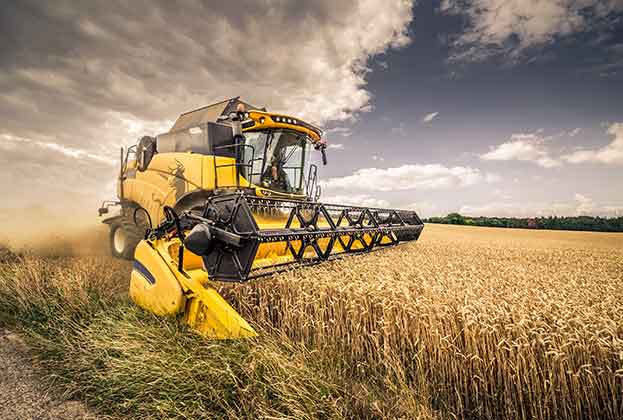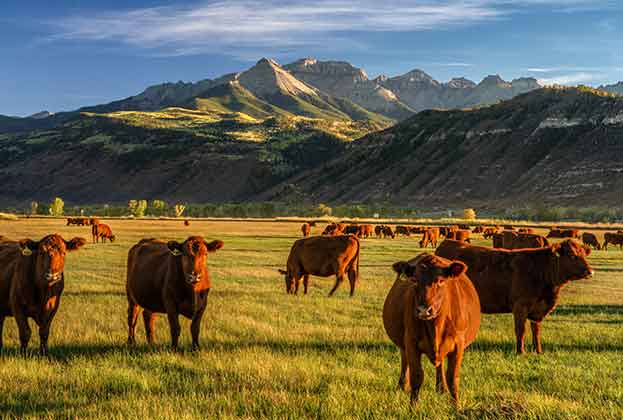Soil carbon sequestration has a key role to play in reducing atmospheric carbon and may provide an added bonus to farmers
Multiple factors, at international and national levels, are driving the action on curbing emissions in order to tackle climate change. The landmark Paris Agreement (2015) is an international concord that aims to restrict global temperature rise this century to less than 2°C above pre-industrial levels and to pursue efforts to limit the increase to a maximum of 1.5°C. The UN’s Intergovernmental Panel on Climate Change (IPCC) report in 2021 found that, under all emissions scenarios, both targets will not be met unless there is a substantial reduction in carbon emissions within the next few years.
Farmers across the planet are seeing carbon farming as a route to new and profitable income streams
Nicola Buckingham, Director, Rural Research
In 2014, the IPCC estimated that agriculture, forestry and land use accounted for 24% of global greenhouse gas (GHG) emissions. However, the ability for land to sequester carbon was not included in that estimate and therefore it is estimated that net carbon emissions from agriculture, forestry and land use could actually be in the region of 4% of the global total. As global finance and supply chains begin to take account of their direct and indirect impacts on climate and biodiversity, the role that primary production plays is firmly in the cross-hairs. Meanwhile, farmers across the planet are seeing carbon farming as a route to new and profitable income streams.
.jpg)
SOIL CARBON MARKETS
The market for carbon investments and offsets is not new, however the increased urgency of the climate agenda has boosted the interest in, and relevance of, the marketplace. Around the world, land managers have the opportunity to store carbon in the soil through regenerative agricultural practices and sell that captured carbon in the market for offsets. Restoring soil carbon has co-benefits for farmers, including increased productivity and environmental resilience, but it is not without its critics. Cheap offsets mean that more expensive decarbonisation efforts are not prioritised, limiting the long-term structural adjustments needed to meet IPCC targets.
It is important to recognise the difference between purchasing land for commercial carbon offset creation versus investing in rural assets (such as established forestry) that already sequester carbon. These assets can represent a negative value on an owner’s portfolio carbon balance, however cannot be developed into commercial carbon offsets as they fail the additionality test, as explained in more detail below.
Established carbon markets have protocols that set out the standards required to sell credible carbon offsets. The key criteria of commercial carbon offsets are the same around the world. The international nature of the carbon market means that purchasers need to consider how different offset trading platforms approach these criteria.
It is important to recognise the difference between purchasing land for commercial carbon offset creation versus investing in rural assets that already sequester carbon
Nicola Buckingham, Director, Rural Research
Farm-level payments for carbon farming can be action-based or result-based. Action-based schemes reward land managers for putting in place defined climate-friendly agricultural practices. In result-based schemes the payment to land managers is directly linked to measurable indicators of the climate benefits they provide. The advantage of this approach is that the use of public or private funds is more directly linked to the intended climate objective. Hybrid schemes combine elements of action- and result-based approaches, typically conferring a payment to carry out a set of management actions, which is 'topped up' if farmers can demonstrate that they have delivered additional climate benefits.
It is advised that land managers who are looking to sell carbon offsets commercially must address their own business’ carbon balance first. There is a risk that land managers sell offsets that they themselves may have needed, which may jeopardise their products and brand, reducing access to future supply chains. Food businesses across the globe have already made net zero carbon commitments, including Nestlé, Starbucks and Mondelēz. These commitments have so far often failed to take responsibility for the indirect emissions arising from their farmer and producer suppliers though.

THE BARRIERS
Soil carbon sequestration is not the only answer to solving climate change, nor is it likely to become the next commodity for all farmers to sell. Storing carbon in soil is finite; changing farming practices to capture soil carbon will work for a number of years but will, eventually, plateau at a saturation point (the IPCC use a default saturation time of 20 years). Once this point is reached, if the farming methods are significantly altered the stored carbon could be inadvertently released back into the atmosphere. The recent wildfires in America illustrates this issue with any nature-based solution – how can permanence be guaranteed, and who bears the risk and cost of failure?
- Measurement: Accurately measuring year-on-year soil carbon changes is less reliable than measuring carbon quantity changes over a longer period of time (at least a decade). For a market that pays farmers annually, this presents a problem. The methodologies for measurement need to be verified by a trusted, independent third party or against a formal standard. There is a lot of innovation in this space with a number of emerging technologies looking to achieve accurate measurement for a more affordable price.
- Additionality: In order to be a legitimate carbon offset that can be sold within a private market, the carbon offset must prove additionality. Additionality means the carbon would not have been sequestered in the absence of a market for offset credits. In other words, carbon income needs to be a key driver for the land use or management change that is generating the offsets – the project cannot be financially viable without carbon income. This means deriving carbon income from a commercially viable regenerative agricultural business can be difficult to justify, which is clearly a significant barrier to the future of the soil carbon market, particularly as our understanding of what is financially viable begins to incorporate environmental values. The nebulous nature of the 'additionality test' means that this topic currently lacks clarity and requires an agreed-upon and standardised approach.
Soil carbon sequestration has a role in reducing atmospheric carbon in the short to medium term, until industries (including agriculture) are able to fully decarbonise. While there are many good reasons for farmers to increase soil carbon, carbon trading for profit might be an added bonus for those looking to alter their farming practices, as opposed to the driving factor.
Read the articles within Global Farmland Index below.
.jpg)

